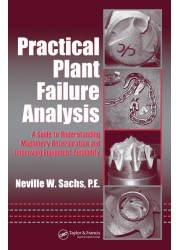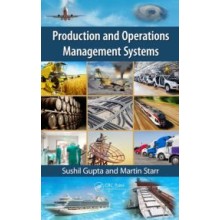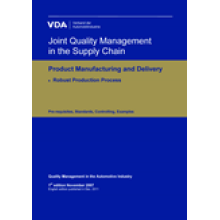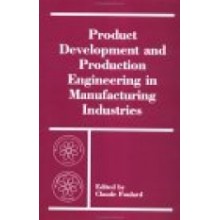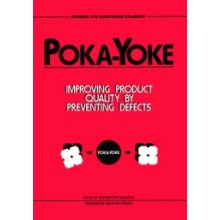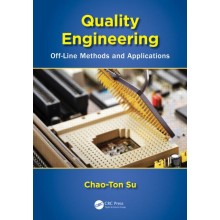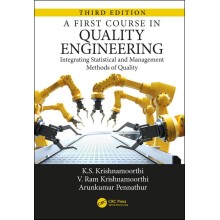Practical Plant Failure Analysis: A Guide to Understanding Machinery Deterioration and Improving Equipment Reliability
Quantity:
-
Add to Compare
Component failures result from a combination of factors involving materials science, mechanics, thermodynamics, corrosion, and tribology. With the right guidance, you don’t have to be an authority in all of these areas to become skilled at diagnosing and preventing failures. Based on the author’s more than thirty years of experience, Practical Plant Failure Analysis: A Guide to Understanding Machinery Deterioration and Improving Equipment Reliability is a down-to-earth guide to improving machinery maintenance and reliability.
Illustrated with hundreds of diagrams and photographs, this book examines…
· When and how to conduct a physical failure analysis
· Basic material properties including heat treating mechanisms, work hardening, and the effects of temperature changes on material properties
· The differences in appearance between ductile overload, brittle overload, and fatigue failures
· High cycle fatigue and how to differentiate between high stress concentrations and high operating stresses
· Low cycle fatigue and unusual fatigue situations
· Lubrication and its influence on the three basic bearing designs
· Ball and roller bearings, gears, fasteners, V-belts, and synchronous belts
Taking a detailed and systematic approach, Practical Plant Failure Analysis thoroughly explains the four major failure mechanisms—wear, corrosion, overload, and fatigue—as well as how to identify them. The author clearly identifies how these mechanisms appear in various components and supplies convenient charts that demonstrate how to identify the specific causes of failure.
Table of Contents
An Introduction to Failure Analysis
The Causes of Failures
Root Cause Analysis (RCA) and Understanding the Roots
The Human Error Study
Latent Roots
How the Multiple Roots Interact
The Benefits and Savings
Summary
Some General Considerations on Failure Analysis
The Failure Mechanisms: How They Occur and Their Appearances
Summary
Materials and the Sources of Stresses
Stress
Elasticity
Plasticity
Modulus of Elasticity (Young’s Modulus)
Toughness
Fatigue
Some Basic Metallurgy
Plain Carbon Steel: The Basics
Understanding Steel Terminology and Material Designations
Strengthening Metals
Summary
Overload Failures
Introduction
Unusual Conditions
Summary
Fatigue Failures (Part 1): The Basics
Fatigue Failure Categories
Fatigue (Part 2): Torsional, Low-Cycle, and Very-Low-Cycle Failure Influences and Fatigue Interpretations
Torsional Fatigue Loads
River Marks and Fatigue Crack Growth
Plate and Rectangular Failures
Fatigue Data Reliability and Corrosion Effect on Fatigue Strength
Residual Stress
Combined Fatigue and Steady State Stresses
Base Material Problems
Very-Low-Cycle and Low-Cycle Fatigue
Very-Low-Cycle in Relatively Brittle Materials
VLC in Ductile Materials
Unusual Situations
Failure Examples
Understanding and Recognizing Corrosion
Corrosion Rates
pH Effects
Effect of Available Oxygen
Exposure Time and Flow Effects
Temperature Effects
The Eight Types of Corrosion
Lubrication and Wear
Three Types of Lubricated Contacts
Manufacturing a Lubricant
Greases
Lubricant Applications
Summary
Defining Wear Mechanisms
Summary Comments on Wear Failures
Belt Drives
Belt Design
Belt Operation and Failure Causes
Drive Efficiencies
Belt Drive Failure Analysis Techniques
Ball and Roller Bearings
Bearing Materials
Parts of a Bearing
Cages
Bearing Ratings and Equipment Design
A Detailed Rolling Element Bearing Failure Analysis Procedure
Roller and Tapered Roller Bearing Mounting Surfaces
Summary
Gears
Gear Terminology
Types of Gears
Tooth Action
Load and Stress Fluctuations
Gear Materials
Tooth Contact Patterns
Backlash
Design Life and Deterioration Mechanisms
Through-Hardened Gear Deterioration Mechanisms
Case-Hardened Gear Deterioration Mechanisms
Analyzing Gear Failures
Failure Examples
Summary
Fastener and Bolted Joint Failures
How Bolts Work
Fastener Failures
Failure Examples
Miscellaneous Machine Element Failures
Chains
Lip Seals
Flexible Couplings
Bibliography for Practical Plant Failure Analysis
Index
Write a review
Your Name:Your Review: Note: HTML is not translated!
Rating: Bad Good
Enter the code in the box below:
Copyright © 2014 Engineering Standards Bureau. All Rights Reserved.
Developed By Zoom Into Web


